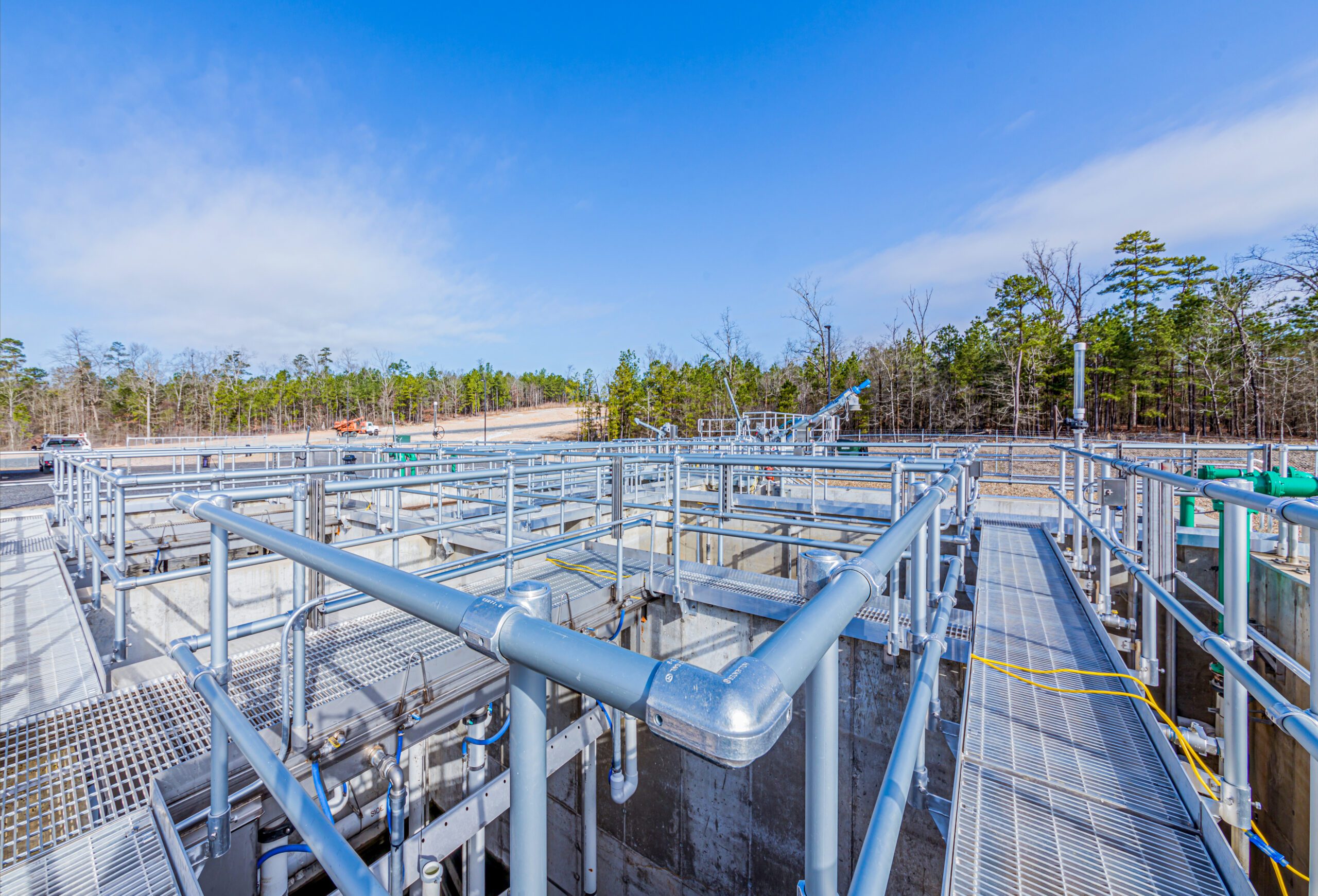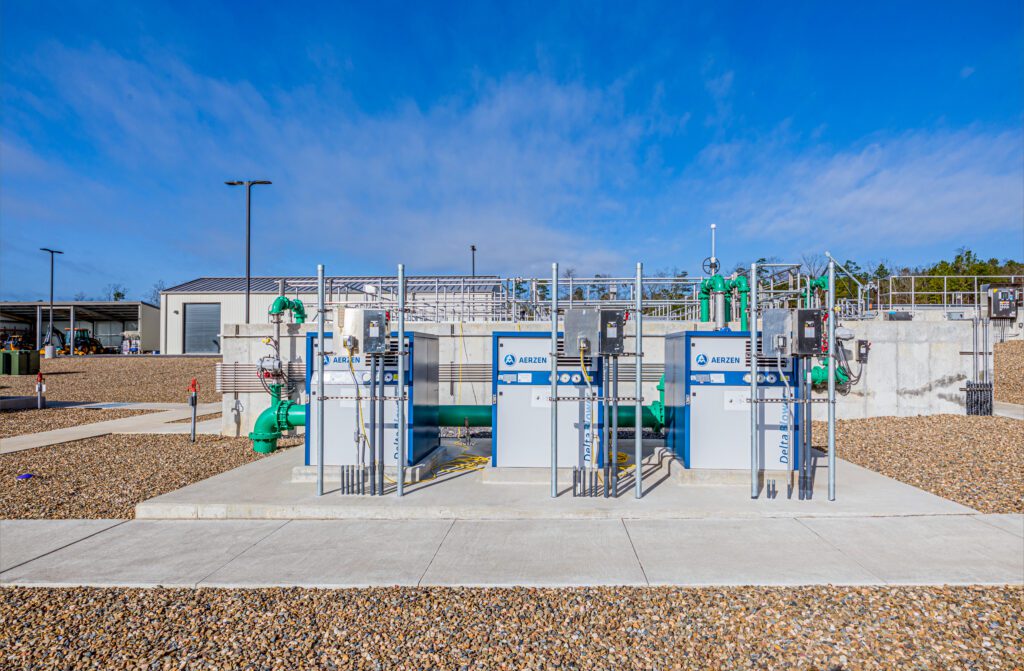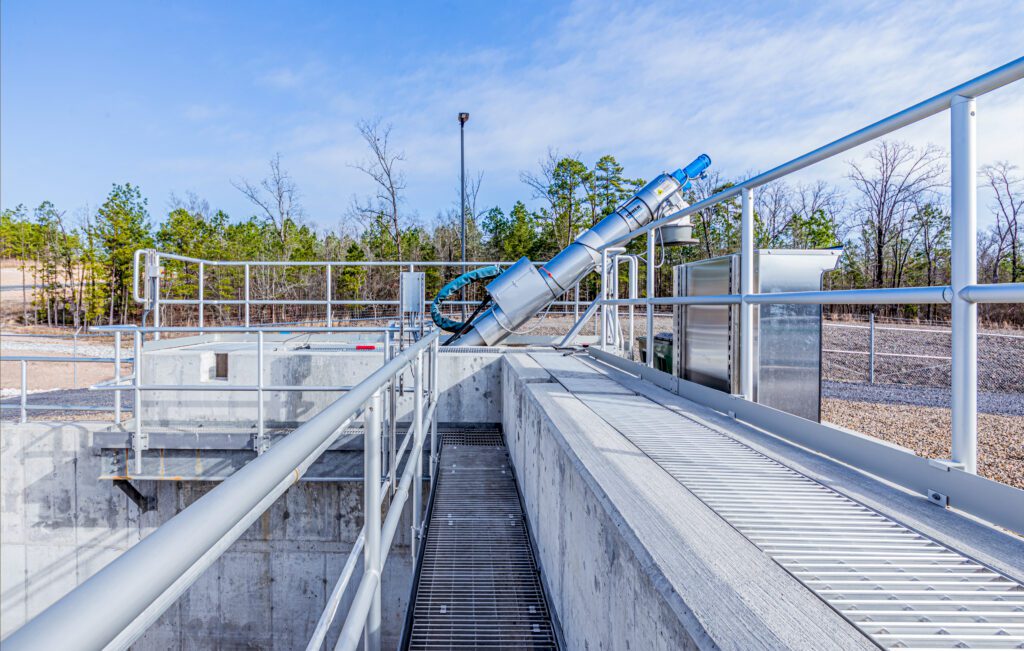News / Crossland Heavy / Projects
Using Multiple GMPs to Save Time and Streamline Project Delivery
| 4 minute read

The Challenge: A Complex Project with a Tight Schedule
For large-scale infrastructure projects, especially those with multiple components and interdependent phases, determining the right Guaranteed Maximum Price (GMP) execution strategy can significantly impact project success. This was the case for the Hochatown Offsite Improvements project, a critical infrastructure initiative supporting Choctaw Nation’s new Choctaw Landing resort in Oklahoma.
The project included four distinct components under one Construction Manager at Risk (CMAR) contract:
- A 4,000 SF facility maintenance building
- A 100 KGD wastewater treatment plant
- One mile of ODOT highway widening
- An access road for a new 28 MVA substation
Each component needed to be billed and scheduled separately due to Choctaw Nation’s funding and timeline requirements. Executing multiple GMPs for a project like this might seem like a huge administrative burden, but under the right circumstances, it can be a powerful tool to keep a project on track and on budget.
The Deliberation: How Many GMPs Are Too Many?
Executing four separate GMPs (one per project component) would have required four rounds of public bidding. This would add significant time and administrative burden, driving up costs. On the other hand, executing a single GMP would have risked Choctaw Nation’s grand opening for their new resort.

The Decision: A Strategic Two-GMP Approach
By analyzing the preconstruction phase schedule, CHC identified a key opportunity to save time without excessive risk. The design was projected to reach 60% completion by late spring, and working with the engineer to prioritize site prep elements in that design interval could enable our team to have the site cleared and ready for construction prior to the 100% design deadline, saving months from the schedule.
Instead of waiting until 100% design completion in late fall, CHC opted to split the wastewater treatment plant work into two GMPs:
- GMP 1 (August): Covered early work packages, including clearing & grubbing, erosion control, yard piping, and site preparation. These packages could be executed at 60% designed, ensuring that all materials were procured and contracts were in place before sitework restrictions were lifted in October.
- GMP 2 (January): Covered the remaining scope, allowing the team to move directly into construction with no downtime.
This strategic approach saved an estimated five months off the schedule, ensuring CHC met the deadline for Choctaw Nation’s resort grand opening.
The Benefits: Time Savings, Cost Efficiency, and Seamless Execution
Splitting the GMPs strategically maximized schedule efficiency without unnecessary complexity. The benefits were clear:
- Five months saved: By starting sitework immediately when allowed, the project moved forward months earlier than a single GMP would have allowed.
- $219,000 returned to the owner: Finishing early and under budget allowed CHC to return cost savings directly to Choctaw Nation.
- Streamlined contracting: Subcontractors selected for both GMP 1 and GMP 2 benefited from continuity, avoiding delays in contract negotiations and mobilization.

Lessons Learned: When Does a Multi-GMP Approach Make Sense?
While executing multiple GMPs was the right solution for this project, it’s not always the best answer. Owners should consider a multi-GMP approach when:
- The project has a strict timeline that requires an early start on specific components.
- Early procurement of materials or equipment can prevent delays and control costs.
- There is a clear division of work packages that allows for phased execution without excessive design risk.
However, owners and contractors must also weigh the risks: issuing construction drawings before full design completion puts pressure on the engineer and increases the chance of changes mid-construction. The key is to assess whether breaking up the GMP solves a problem rather than creating new ones.
Conclusion: Collaborative Planning Drives Success
The CMAR delivery method provides the flexibility needed to make strategic decisions about GMP execution, ultimately ensuring project success. In the case of the Hochatown Offsite Improvements project, collaboration between Choctaw Nation, CHC, and the design team resulted in a tailored solution that saved valuable time and money.
When used properly, a phased GMP approach can be a powerful tool for water and wastewater infrastructure projects. Owners facing strict deadlines should explore this option early in project planning to determine whether it’s the right fit for their needs. After all, saving time is saving money—and the right GMP strategy can make all the difference.
Latest News

